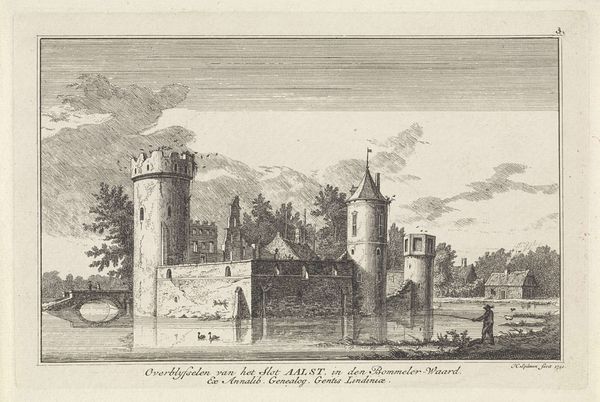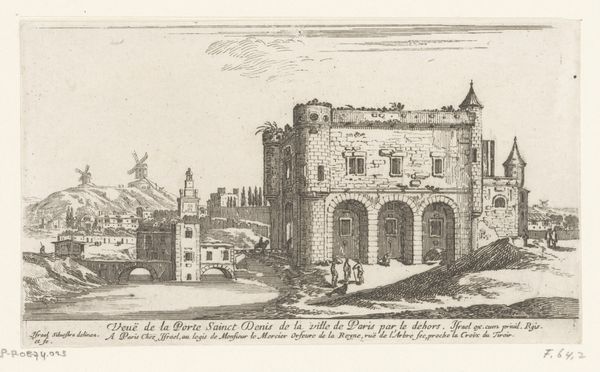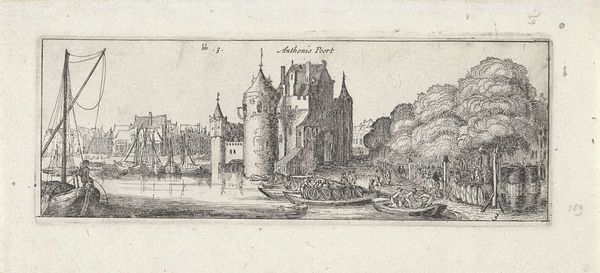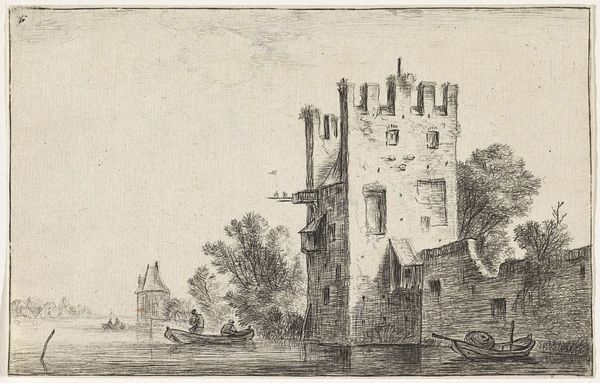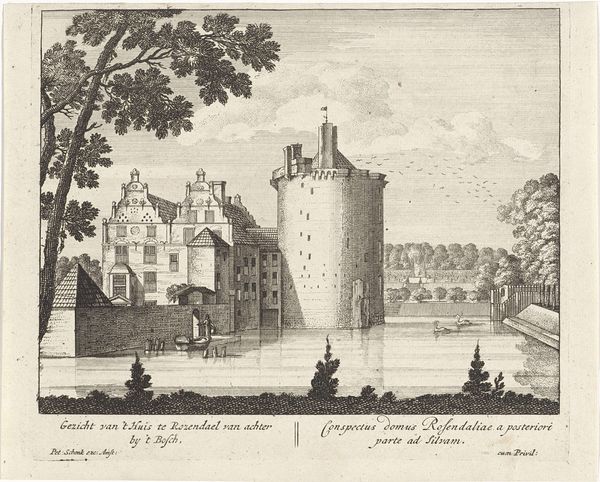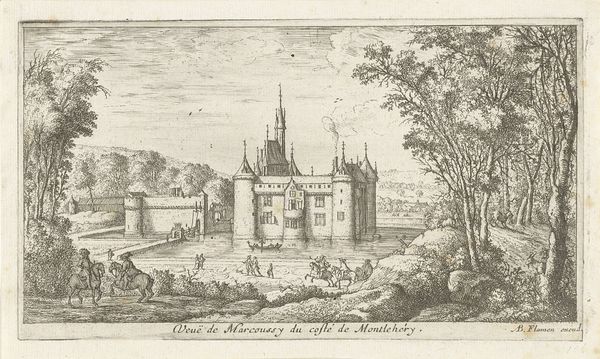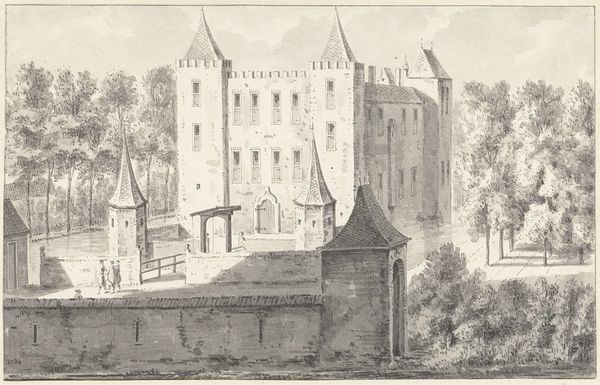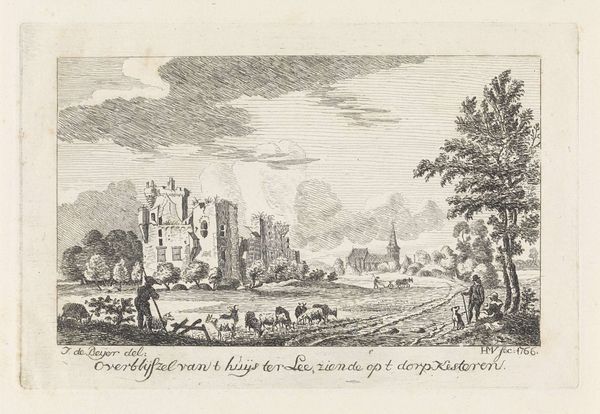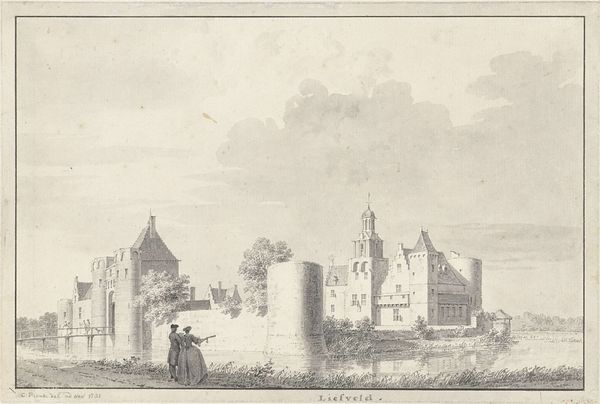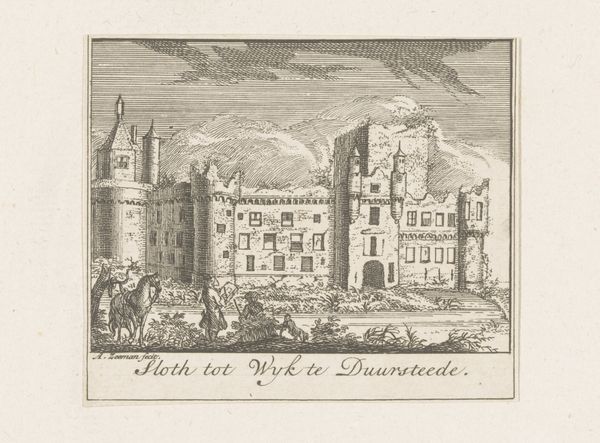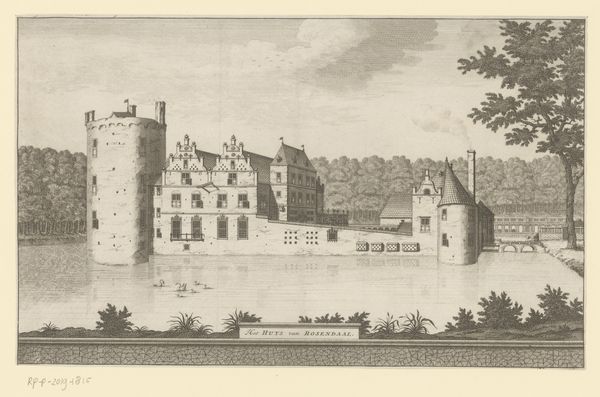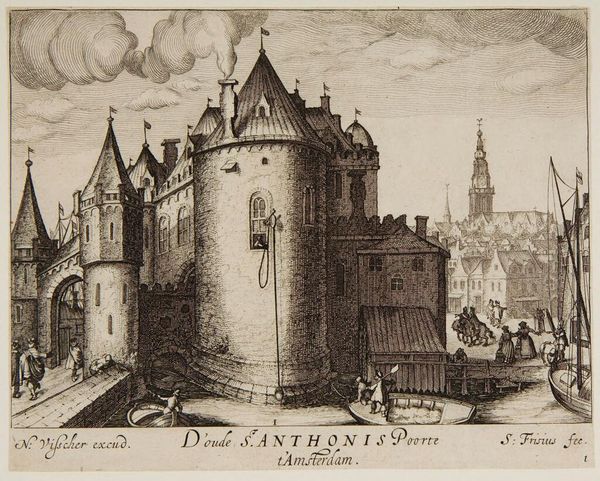
Gezicht op de ruïne van kasteel Egmond te Egmond aan den Hoef 1711 - 1774
0:00
0:00
jacobusschijnvoet
Rijksmuseum
engraving, architecture
#
baroque
#
landscape
#
cityscape
#
engraving
#
architecture
Dimensions: height 142 mm, width 176 mm
Copyright: Rijks Museum: Open Domain
Curator: Take a moment to consider this engraving, “View of the Ruins of Egmond Castle at Egmond aan den Hoef.” Jacobus Schijnvoet completed it sometime between 1711 and 1774. Editor: What strikes me first is the contrast between the meticulously rendered architectural details of the ruined castle and the calm, almost serene depiction of the surrounding landscape. It really sets an interesting mood, somber but also reflective. Curator: Precisely. This was a time when romanticizing ruins was a trend, fueled by rising national sentiment and reflection on past conflicts. Schijnvoet uses the ruins not just to depict a place, but to invoke feelings about the passage of time and the consequences of political strife. Editor: Right, and think about the physical act of engraving – each line etched with intention, reflecting the careful labour put into representing even a state of decay. The printing process makes the ruins almost accessible, consumable, prompting questions of power and ownership. How did these images circulate and to whom? Curator: Well, engravings were easily reproduced and widely distributed, making scenes of historical significance accessible to a broad public. The depicted castle met its ruin because it was set ablaze by the troops of Lodewijk van Loon. Through images like these, viewers could engage with national history and narratives of loss or resilience. It shapes the public perception of events and, in a sense, builds a collective memory. Editor: Yes, even the materials speak of accessibility; from the artist’s design to the printing and selling, it served many people, all part of how information spread and formed social beliefs about leadership, governance and perhaps the transience of worldly things. Curator: In fact, it invites reflection not just on Dutch history but also the ephemeral nature of power, now framed within this calm composition. Editor: It’s impressive to consider that through a reproducible engraving, we’re still actively engaging with questions of the castle’s material decay, labour and loss that shape a national story and self image, Curator: Indeed. Schijnvoet offers more than a topographical rendering; he presents a commentary on history and the narratives that define a nation.
Comments
No comments
Be the first to comment and join the conversation on the ultimate creative platform.
